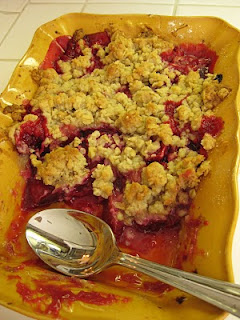
The New Year is a time for new beginnings, a clean slate, celebrating the old and welcoming in the new. And what better way to celebrate than with some food and a few drinks? Nothing brings people together like a delicious dish. But this particular holiday calls for meals that bring luck, health and prosperity to the upcoming year. And not all foods are created equal when it comes to ringing in the New Year. Every culture has a different dish they consume for New Year's, but they all share similarities, like hoping for happiness and prosperity in the future.
Greens
Cabbage, kale, chard and collards are all cooked on New Year's because of their vibrant green hue. They resemble money, therefore symbolizing good fortune in the coming year. It's believed that the more you eat, the healthier and prosperous you will be. These greens are enjoyed in a variety of ways across the globe. The Danish like to sprinkle stewed kale with cinnamon and sugar, while the Germans enjoy sour cabbage, otherwise known as sauerkraut.
Round fruits
Resembling money or coins, for their round shape, are fruits like oranges and
Cabbage, kale, chard and collards are all cooked on New Year's because of their vibrant green hue. They resemble money, therefore symbolizing good fortune in the coming year. It's believed that the more you eat, the healthier and prosperous you will be. These greens are enjoyed in a variety of ways across the globe. The Danish like to sprinkle stewed kale with cinnamon and sugar, while the Germans enjoy sour cabbage, otherwise known as sauerkraut.
Round fruits
Resembling money or coins, for their round shape, are fruits like oranges and
clementines. In the U.S., people eat these by the slice,
but how many slices they eat is the important part. Americans snack on 12
slices, which represent the number of months in a year. Other countries, like
the Philippines, eat 13 slices because the number is said to be
lucky.
Cornbread
In the Southern United States, cornbread can be found on the plates of many on New Year's. Its warm yellow shade represents the color of gold. Some even add kernels of corn to their bread to symbolize gold nuggets for even more prosperity in the coming year.
Cornbread
In the Southern United States, cornbread can be found on the plates of many on New Year's. Its warm yellow shade represents the color of gold. Some even add kernels of corn to their bread to symbolize gold nuggets for even more prosperity in the coming year.
Champagne
It may not be found on a plate, but every year, people pour a
Tips for serving Champagne:
- Serve Champagne chilled, between 39 and 48 degrees Fahrenheit. You can store the beverage in a wine refrigerator or fill a wine bucket with water and ice and give the bottle about 30 minutes to chill to perfection.
- Always leave the bottle corked until you're ready to serve.
- Serve in long-stemmed flutes, which helps the flow of bubbles and even makes the aroma of the beverage stronger.
- Never chill the flutes - leave them at room temperature.
Here's to a happy and healthy New Year for all!


































